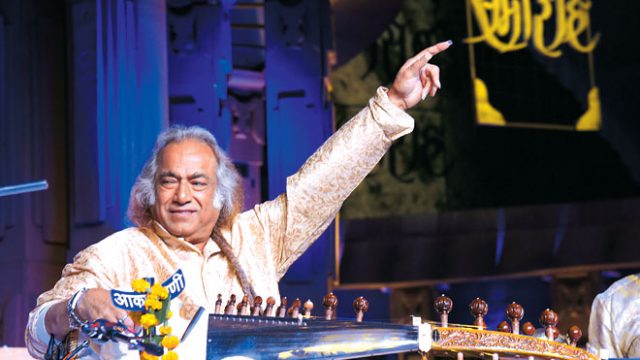Bright blue skies and balmy breezes greet us as the Bhopal-Gwalior Shatabdi tears through a countryside ablaze with mustard fields. We are off to enjoy the revival of a Mughal-era slice of nostalgia in Gwalior with the latest edition of the Tansen Samaroh 2015. This annual extravaganza, organised by the Madhya Pradesh Kala Parishad, is dedicated to one of Mughal emperor Akbar’s ‘Nine Jewels’, Tansen, celebrating the legendary musician’s immeasurable contributions to Hindustani classical music.

First, however, at the aptly named Tansen Hotel, we gird our collective ‘heritage’ leanings for a jaunt to Morena district, about 40km away. In our sights are a couple of the most riveting temple site discoveries in this Chambal valley enclave—better known once for the exploits of the dreaded ‘Chambal dacoits’. The circular Chausath Yogini Temple, now known as the Ekattarso Mahadeva Temple, is said to have inspired the architectural duo Herbert Baker and Edwin Lutyens in designing Parliament House. The images from the niches have long disappeared, stolen for exports. What remains behind is a vestige of the glorious vision of what Raja Devapala had commissioned in 1323. Set in concentric rings with structures separated by a sky-lit courtyard, the temple site features a traditional open-air tantric yogini shrine with a pillared mandapa; the open-faced outer circular pillared corridor features 64 niches, filled with idols of Shiva, and still used by some villagers for tantric rites.

We then went to my favourite place of discovery—Batesar/Bateshwar. Once said to have 400 temples consecrated to Lord Shiva, it has been a protected, though neglected site. I first visited about 12 years ago—then one had to leap over the fallen barbed wire to get into the complex. All around me lay mounds of shattered temples. In the late afternoon light it appeared eerie. No wonder it became a haunt for dacoits. I am in for a pleasant shock though. There’s a spruced up gateway and passage into the complex. I learn that this turnaround has been due to K.K. Muhammed, Superintending Archaeologist, ASI. He negotiated with the dacoits to allow the restoration work at their ancestral holy spot. Today almost 100 temples are under various stages of completion.

Fuelled by this thrilling turn of events we head back for a repast of a musical one —the Tansen Samaroh 2015, in plain sight of Tansen’s Tomb. The night chill’s invigorating as is the medley of surand tal that transports us to another world with the stunning jugalbandi of Saskia Rao de Haas (Indian cello) and Phil Scarf (saxophone). Other luminaries included Abdul Majid Khan (sarangi), Sulekha Dharkar (khayal), Rajan and Sarang Kulkarni (sarod), Dhrupad specialists from Mumbai, Sukhdev Chatturvedi, Harish Tiwari and Ustad Sabir Khan (tabla). The son et lumiereat Gwalior Fort proved to be the perfect wrap-up on our last night in town.




